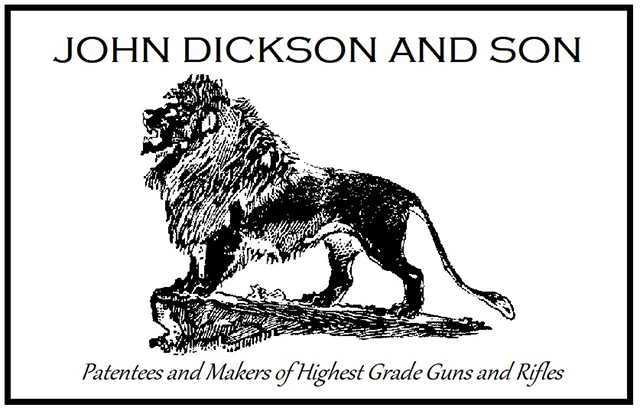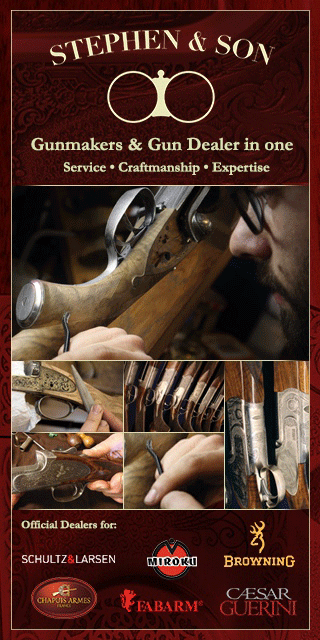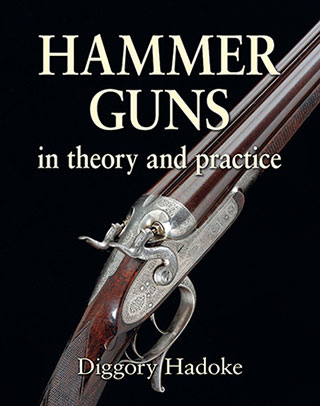The nineteenth century saw huge leaps forward in the technology, as James the Younger was able to testify. When he was apprenticed to his father in 1843, the guns he was trained to build were relatively similar to those that had been built for the previous century or more, albeit using the more reliable percussion cap than the flintlock that James the Founder would have trained on in 1798. The percussion cap provided a means of waterproof ignition, and marked the first successful advancement of ignition technology. By the time James the Younger died in 1909, he had witnessed and participated in the invention of the modern side-by-side gun and its ammunition over the course of a thirty-five year period, and died just a month after the registration of the first over & under patents.
It is a testament to the Purdey family, and James the Younger in particular, that they not only invented designs which remain in current use today, but also attempted to meet the demands of the sportsman in other areas as well. At least one design has become so ubiquitous that its absence is more worthy of note than its presence. James the Younger created eight patents over a relatively short period of seventeen years, and two of these remain in production today. This article, the first in a series of four, looks at the first two of these.
Although the first James had developed a ‘self-expanding bullet’ in 1852, this was a variation on the existing Minie bullet, and so could only be protected as a Registered Design. Although trialled by the army that same year, the bullet was considered unsatisfactory for service purposes. Purdey’s ‘Express’ rifle, and its two-groove bullet, proved more popular with sportsmen for shooting deer in the Highlands, with its greater range and flatter trajectory than had previously been achievable. However, given its introduction in the early 1850s, it is entirely likely that this was a collaboration between father and son, if not an early product of James the Younger’s inventiveness. However, once again the principle was not entirely novel, and as such incapable of being patented.
Patent no. 302, of 3 February 1861 – Turnover Tool:
With his father’s retirement in 1858, James the Younger was now his own master. This coincided with the company’s first foray into breechloading arms, with both its first pinfire gun and rifle completed in 1857. One of the leading forces in the introduction of Lefaucheux’s system to Britain had been James the Younger’s brother-in-law, James Lang, and it seems likely that James the Younger was aware of the design’s potential. His first patent came in February 1861, when he invented a form of reloading apparatus called a turnover tool. Once the cartridge was loaded with powder, shot and wads, a top card would be placed on top, and the raised edge of the cartridge rolled over to form the seal. Although there were various tools designed to achieve this, most used a horizontal arrangement to allow the user to apply pressure whilst sealing the cartridge. James instead favoured a vertical arrangement, allowing the loader to pull down on a lever with one hand whilst turning a crank handle with the other. This rotated the mouth of the cartridge in a channel with a small steel projection, that turned the paper case over under a consistent pressure. This meant that the cartridge unfolded evenly when fired, giving an even pressure release and causing less disruption to shot patterns. This was the first step towards making breechloaders effective hunting guns, and the principle remained in use well into the post-war period.

Patent No. 1104, of 2 May 1863 – Double Bite Snap-Action (“Purdey Bolts”):
James’ second patent was registered a little over two years later, in May 1863, and was arguably his most important. Although applied for under the rather vague title ‘Improvements in Breech-Loading Firearms’, it is better known to gunmakers and collectors as simply ‘Purdey Bolts’. Up to that point, the action and barrels had been locked together using various types of rotary underlevers. These usually had to be held in the open position whilst the barrels were closed, and then turned into the locked position. The original Lefaucheux design had the underlever running forward underneath the barrels when closed, effectively providing additional support when the gun was fired. This was cumbersome to operate, and by the time Purdey produced its first breech-loader they used what externally resembles a Henry Jones rotary-underlever, shaped to fit over the front of the trigger-guard when closed. However, those first guns had only a single locking ‘bite’ on the rear lump – Jones’s 1859 patent had the screw grip in between the two barrel lumps, and with slots on both of them, creating a ‘double bite’. Set up properly, these can be made to cam to virtually closed by the closure of the barrels, but they still require the firer to undertake a fairly large rotary motion to open the gun, making the loading process slow. As such, a large number of inventors were working on ‘snap actions’ – in essence, a locking system that would lock closed purely by shutting the gun. This would make loading faster, and potentially increase a shooter’s rate of fire.

While many of James’ competitors focussed on single-bite snap-actions, locking purely on the rear barrel lump, he produced perhaps the first double-bite design, which locks into recesses on the rear of both barrel lumps. Its other benefit is that, when closing the gun, the bolts are pushed back by the front lump. As this is nearer to the cross-pin, it has greater leverage than single-bite actions, which are locked on the rear lump. The bites therefore operate both sooner and more positively as the barrels are brought back onto the action. It is worth noting that this design was developed for pinfire cartridges, as Purdey did not make its first centrefire gun until 1865. Purdey’s design did not make a particularly strong impression on his contemporaries at first. J.H. Walsh, editor of The Field, described it in 1866 as ‘a neat piece of workmanship, but somewhat deficient in durability’. Yet when the period of patent protection ended in 1877, uptake of the design as the locking system for side-by-side guns was virtually universal. Now, some one hundred and fifty-seven years after the patent was assigned, and given that all contemporary designs have long since passed into history, it would appear that Walsh’s comments were premature!
While the locking system has proven itself incredibly robust in the face of changing propellants and ever increasing load sizes, this was only half of the equation, as some form of lever was required to actuate it. Most snap-action designs (where the locking points are underneath the barrels), as against those like the original Westley Richards’ ‘dolls head’ design (where the barrels are locked into the breech-face), favoured a pivoted lever on the underside of the action, that then curved round the front of the trigger-guard and terminated in a thumb-piece. Examples of all of these can be found paired with James’ patent, although the most extravagant was a design Purdey created for the Duc d’Abrantes, where the lever terminates in an open scroll, with the thumb-piece on the reverse. In a somewhat stereotypical approach to foreign names, the factory bastardised the spelling, recording such levers as ‘de Brantes’.

The most recognisable design used by Purdey is that depicted in the patent drawing, which is now referred to as the Purdey Thumb Lever. These have the front of the trigger-guard split open, resulting in an O-shaped aperture, through which the thumb-piece of the lever can be accessed. The initial design, now referred to as the First Pattern, had the pivot point about one inch forward of the thumb-piece, where it connected to the centre of the bolt. This is slightly ungainly, and due to the gap between pivot and lever requires a relatively large movement to unlock the gun. It was replaced by the Second Pattern lever, where the pivot point is directly over the thumb-piece, resulting in much less movement and a much smoother action. It is not entirely clear when the transition was made, but the resulting actions are amongst the most sought after from that period.
Although outside the scope of this article, it is worth noting here that the toplever, although inextricably linked to Purdey bolts, was not James’ invention. Instead, it was the creation of William Middleditch Scott, who patented it in 1865. The son of the better known W.C. Scott, W.M. Scott’s patent only covered the toplever and the vertical spindle which it operates, but the patent drawing shows that it was clearly intended to be used in conjunction with Purdey bolts. The two companies came to a mutual agreement regarding royalties and usage in 1868, paving the way for perhaps the most ubiquitous pairing in English gunmaking to this day.
Dr Nicholas Harlow is Gunroom Manager at James Purdey & Sons.
Published by Vintage Guns Ltd on



